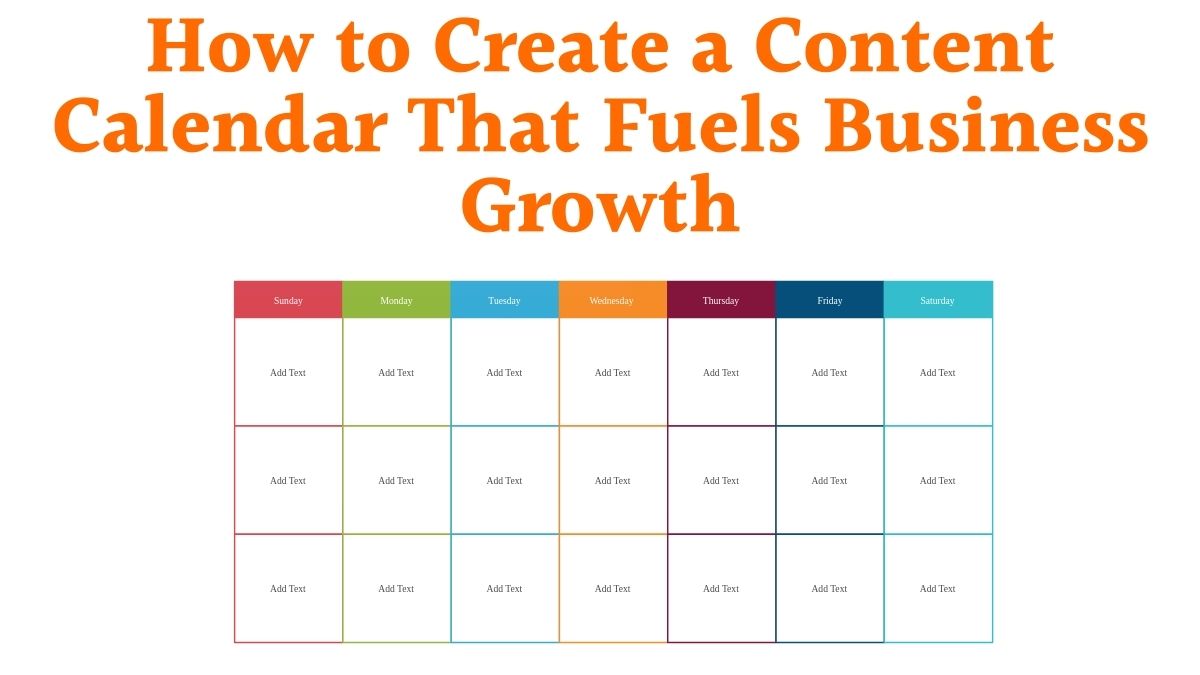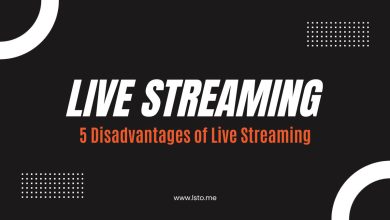
Content is at the heart of modern marketing strategies. Businesses need great content to engage their audience, build trust, and drive conversions. They use it in blog posts, social media, emails, and videos. However, without a plan, content creation can quickly become chaotic and ineffective. This is where a content calendar comes into play.
A content calendar keeps your content organized. It also ensures consistency, improves efficiency, and aligns content with your business goals. A good content calendar can fuel business growth. It helps with planning, optimizing, and executing. This blog post will explore how to create a content calendar. It should boost business growth and streamline your content marketing.
What is a Content Calendar?
A content calendar is a strategic tool that outlines your content creation and publishing schedule. It is a visual roadmap. It helps businesses plan, manage, and organize content across platforms like blogs, social media, email, and video. A content calendar typically includes:
Publishing dates
Content topics and themes
Content formats (e.g., blog posts, videos, infographics, social posts)
Platforms for distribution
Key deadlines and milestones
Responsible team members or content creators
Content calendars can be created using spreadsheets, project management tools like Trello or Asana, or specialized content calendar software. The goal is to align your content with your marketing aims. It should also deliver value to your audience at the right time.
Why a Content Calendar is Essential for Business Growth
A well-executed content calendar can have a significant impact on business growth by:
Driving consistency: Regular content posting keeps your audience engaged and improves brand visibility across platforms.
Streamlining workflows: Organizing content in advance allows for better resource allocation, preventing last-minute scrambles.
Aligning content with business goals: A calendar helps you focus on content that supports your marketing objectives and resonates with your audience.
Improving content quality: By planning in advance, you allow time for research, editing, and optimization, leading to higher-quality content.
Maximizing ROI: Consistent, high-quality content enhances engagement, builds trust, and can lead to higher conversions and increased revenue.
Now that we understand the importance of a content calendar, let’s look at the steps to create one that fuels business growth.
Steps to Create a Content Calendar for Business Growth
1. Define Your Content Goals and Objectives
Before you start filling in your calendar with topics and dates, it’s important to define your overall content goals. Ask yourself:
What do you want to achieve with your content? (e.g., brand awareness, lead generation, customer retention, SEO improvement)
Who is your target audience, and what are their needs?
How does your content tie into your broader business goals?
Clearly defined goals will guide your content planning process, helping you create content that is both purposeful and aligned with your business objectives. For example, if your goal is to increase website traffic, your calendar might prioritize SEO-driven blog posts. If brand awareness is your focus, you may allocate more time to social media campaigns.
2. Conduct a Content Audit
Before creating new content, take stock of your existing assets by conducting a content audit. This step will help you identify content gaps, uncover high-performing content that can be repurposed, and eliminate outdated or irrelevant material.
During the audit, evaluate your blog posts, social media updates, email newsletters, videos, and other marketing materials. Identify what’s working, what needs improvement, and what new topics you need to cover. Use this information to inform your content calendar and optimize the use of your resources.
3. Choose Your Content Formats and Platforms
Not all content is created equal, and not every platform is suitable for every business. When making your content calendar, consider what types of content resonate with your audience. They should also support your business goals.
Blog posts: Great for SEO, thought leadership, and driving organic traffic.
Social media posts: Ideal for engagement, brand awareness, and real-time interaction.
Videos: Engaging content format that can be used for tutorials, product demonstrations, and storytelling.
Email campaigns: Effective for nurturing leads and driving conversions.
Infographics: Shareable content that conveys information quickly and visually.
Podcasts or webinars: Excellent for in-depth discussions, interviews, and educational content.
After deciding on the formats, determine the platforms you will use to distribute your content. Whether it’s Instagram, YouTube, LinkedIn, or your blog, choose the channels that best match your audience’s preferences and habits.
4. Brainstorm Content Ideas and Themes
With your content formats and platforms in place, it’s time to brainstorm ideas. Consider your audience’s needs, interests, and pain points to generate topics that will resonate with them. Use tools like Google Trends, Answer the Public, and SEMrush to find popular search queries, industry trends, and content ideas.
Create themes or content pillars to guide your content planning. These are broad categories or topics that align with your brand and industry. For example, in fitness, your pillars might be “healthy living,” “workouts,” and “nutrition.” Themes keep your content relevant to your audience and aligned with your business goals.
5. Map Out Your Content Calendar
Once you have your content ideas, map them out on your calendar. Determine when and where each piece of content will be published. A content calendar should include:
Publish dates: Decide on the frequency of your content (e.g., weekly blog posts, daily social media updates).
Content type: Label each entry with the format (blog post, video, infographic, etc.).
Platform: Specify where the content will be published (website, YouTube, Instagram, etc.).
Assigned team members: Assign content creators, editors, and designers to each piece of content.
Deadlines: Set deadlines for each stage of the content creation process (research, writing, design, approval, etc.).
Make sure to account for seasonal events, holidays, product launches, and other significant dates. For example, if you’re launching a new product in the summer, plan a series of content pieces leading up to the launch to build anticipation.
6. Create a Workflow for Content Creation and Approval
To ensure your content calendar runs smoothly, it’s crucial to establish a clear workflow for content creation and approval. Define who is responsible for each step of the process, from idea generation to publishing. Use project management tools like Trello, Asana, or Monday.com to keep everyone on track and ensure deadlines are met.
An effective workflow might include:
Content creation: Writers, designers, and video producers create the content.
Editing and proofreading: Editors review the content for accuracy, grammar, and tone.
Approval: Content is reviewed and approved by key stakeholders (e.g., marketing managers, creative directors).
Publishing: The content is scheduled and published across platforms.
7. Monitor Performance and Adjust
Creating a content calendar is not a one-time activity. To boost business growth, you must monitor your content’s performance. Then, adjust your calendar as needed. Track key metrics such as:
Website traffic
Social media engagement
Email open and click-through rates
Lead generation and conversions
Use this data to identify which content types and topics resonate most with your audience. If a particular post or campaign performs well, consider creating similar content. If certain content underperforms, evaluate why and adjust your strategy.
8. Optimize Content for SEO and Social Sharing
A content calendar keeps you organized. It also lets you optimize your content for maximum visibility. When planning your content, consider:
SEO optimization: Use relevant keywords, meta descriptions, alt tags, and internal linking to boost search engine rankings.
Social sharing: Make your content easily shareable on social media by including eye-catching visuals, compelling headlines, and calls to action.
Repurposing: Repurpose your high-performing content into different formats (e.g., turning a blog post into a video) to extend its reach and lifespan.
9. Repurpose Content to Maximize ROI
To get the most out of your content efforts, consider repurposing content across multiple platforms. For example, a long-form blog post can be broken down into smaller social media posts, infographics, or video snippets. This allows you to extend the reach of your content and maximize its return on investment (ROI).
Repurposing keeps your content fresh and relevant across formats and channels. It gives your audience many ways to engage with your brand.
Conclusion
A good content calendar is key to growing a business. It drives growth through effective content marketing. Define your goals. Organize your content ideas. Plan ahead. You can then create a steady stream of high-quality content. It will resonate with your audience and drive results.
As you use your content calendar, stay flexible. Adapt to changes in your industry, audience, and business goals. With effort and smart planning, your content calendar will help you. It will build a stronger brand, engage more customers, and drive growth.




